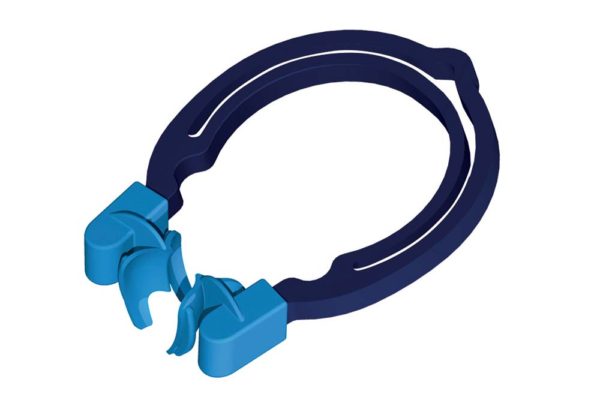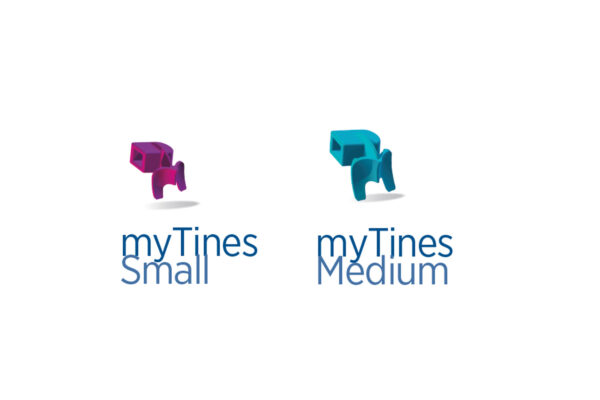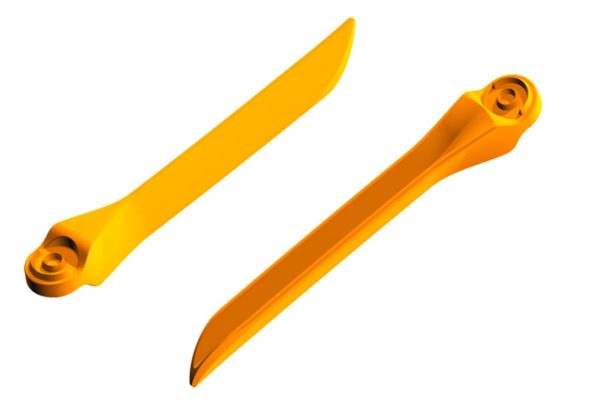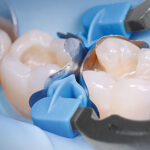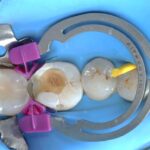22 May Multiple Class II restorations with optimal results – myRing Forte with myTines Small – Dr. Losada
Multiple Class II restorations with optimal results with myRing Forte & myTines Small
by Dr. Katherine Losada

Dr. Katherine Losada
Dr Katherine Losada graduated from the Universidad Central de Venezuela (Caracas). Since 2008 she is working as private practitioner in Zurich, Switzerland. As an affiliate member of the European Academy of Aesthetic Dentistry (EAED), she dedicates her practice to aesthetic and conservative dentistry, with a special highlight on digital approaches. Nevertheless, Katherine always focus on the patient first, taking care of providing the best treatments according to the clinical situation and patient’s needs.
clinical case
A 28 years old male patient came to our attention complaining of pain by chewing and some sensibility in correspondence of the first Quadrant. A preliminary clinical evaluation and bite X-rays evidenced the presence of multiple primary and secondary carious lesions on premolar 15 and molars 16 and 17 under previous composite restorations.
The following images show part of the step-by-step on direct composite restorations procedure with multiple cavities and specially the first molar (16) using the new extremities myTines Small (Polydentia) in combination with myRing Forte sectional matrix ring (Polydentia).
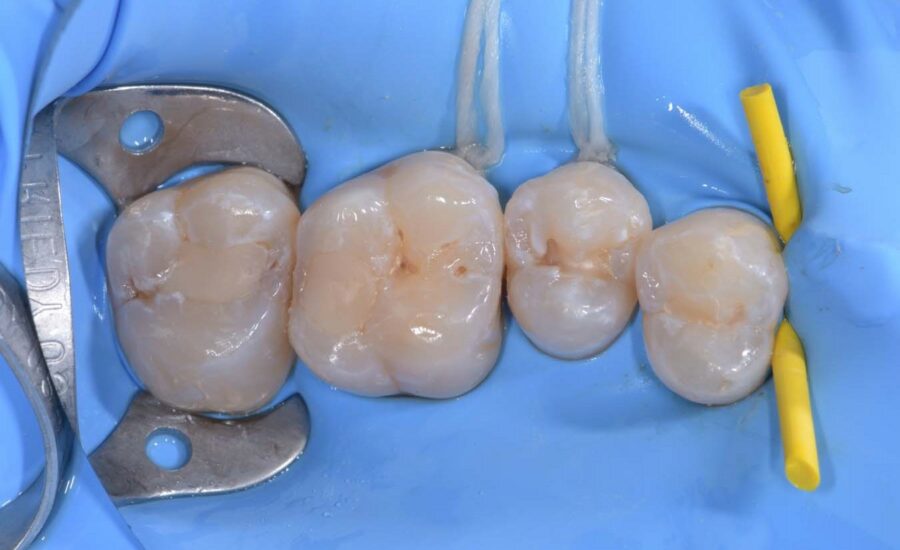
1: Pre-operative view; the preliminary analysis highlighted the presence of two class II carious lesion on premolar 15 mesial and distal, a class I and class II carious lesion on molar 16 mesial and a MO carious lesion on 17.
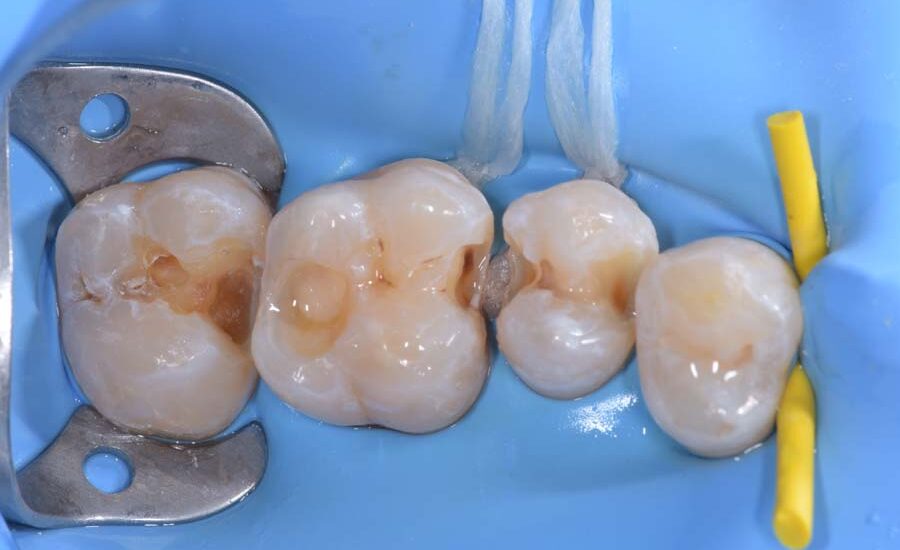
2: The quadrant during the preparations of the cavities, removal of carious lesions and old composite restorations. The small size of the cavities makes the present clinical situation well suited for the use of the extremities myTines Small in combination with the sectional matrix ring myRing Forte.
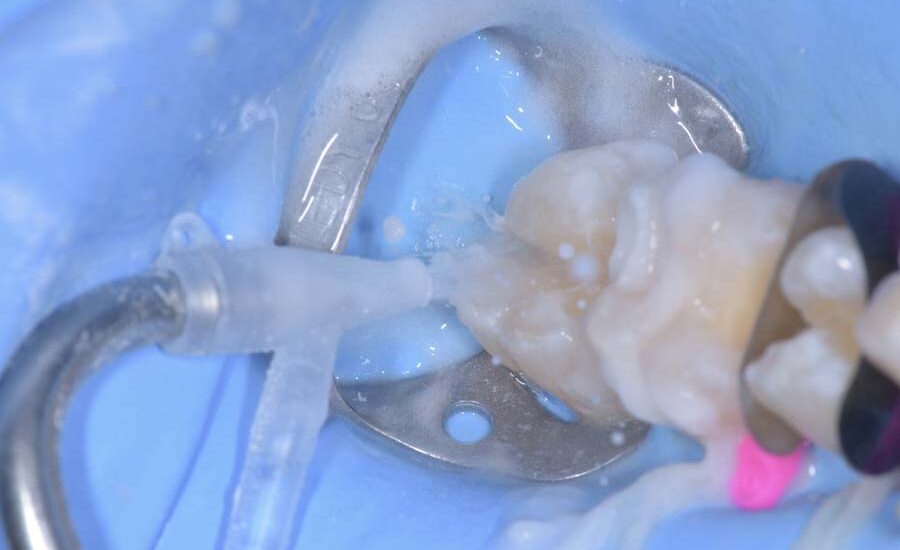
3: Cleaning the cavities using air abrasion Aluminium Oxide 29um. A clean, rough surface is an essential condition for any successful adhesive procedure.
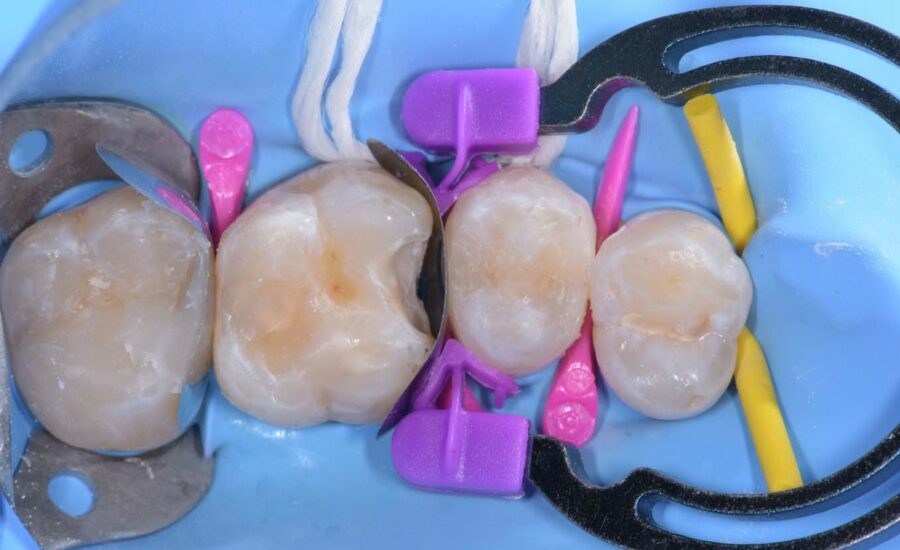
4: Molar 16 equipped with myWedge XS, LumiContrast sectional matrices and myRing Forte sectional ring combined with the new ring’s extremities myTines Small. The flexible geometry of the extremities myTines Small significantly improves the adaptation of the ring to the proximal morphology ensuring an ideal stability even in case of reduced crown height. The other Restorations on 17 and 15 were performed with the same procedure.
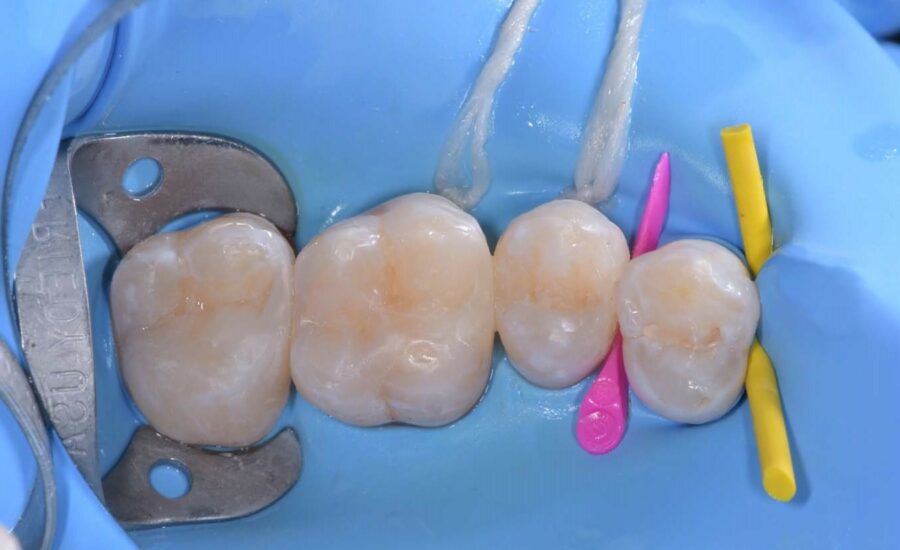
5: The quadrant after filling the cavities with direct composite and performing the finishing processes. The contact points and contour are optimal after removal of the myWedge XS and LumiContrast sectional matrix.
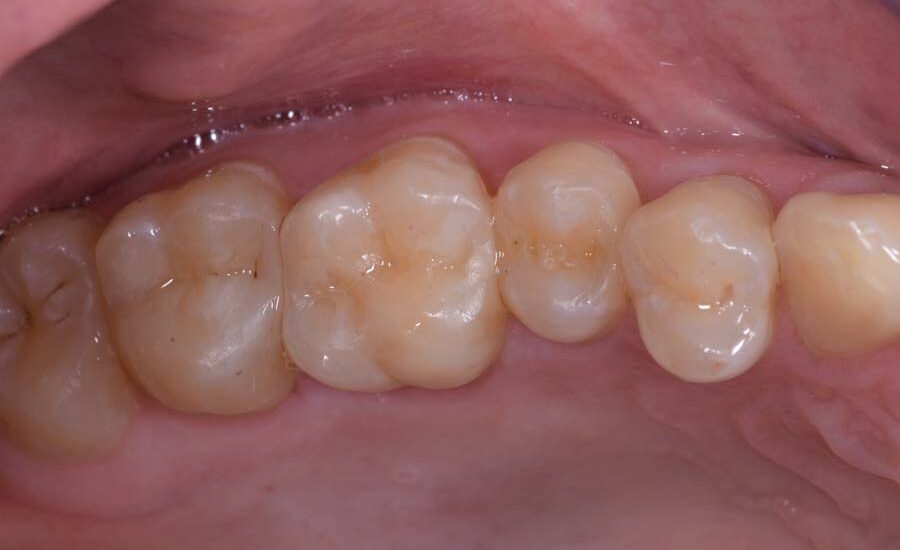
6: View after removal of the rubber dam and occlusal check.
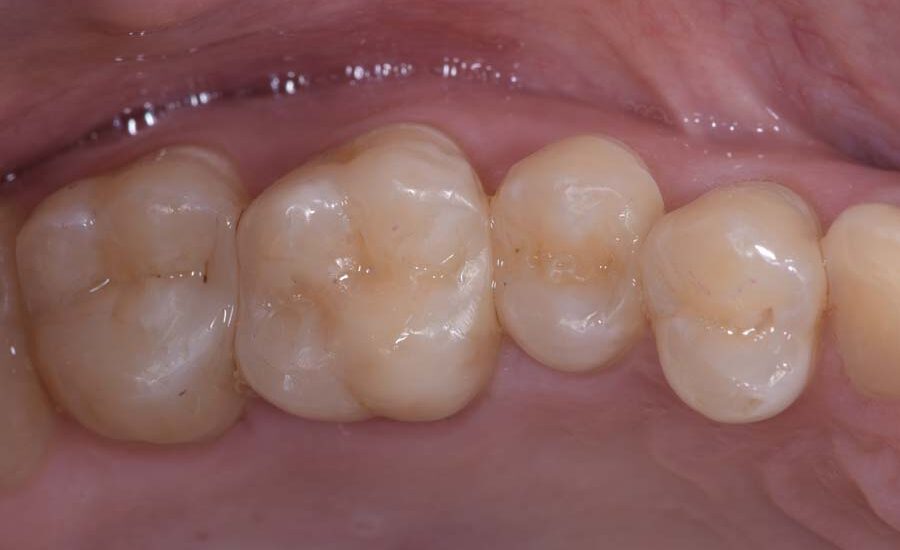
7: Post-operative view of the restoration after 6 Weeks.
conclusion
The use of the appropriate Matrix System combined with myWedge XS and myRing Forte sectional ring from Polydentia allows us to properly perform multiple Class II restorations as described in the case above. The precision of the new sectional matrix ring’s extremities myTines Small adapted on myRing Forte provides a secure and firmly adaptation of the LumiContrast sectional matrix to the walls of the proximal cavities assuring a good stability during the build up of the cavities by composite filling. The matrix system enabled us to create a seamless transition between the restored marginal contour and cavity edges. I totally recommend the new myTines Small on myRing Forte. It was never so easy to adapt the matrix without having stability troubles, now they are part of my daily restorative routine.
other clinical cases
-
Class II adjacent cavities on 1st and 2nd molars – QuickmatFIT anatomical sectional matrices & myRing Forte – Dr David Gerdolle
A 28-year-old female patient, without any systemic medical conditions presented with a carious lesion affecting both molar 46D and 47M. The following case illustrates the direct composite restoration of the lesion using the Polydentia QuickmatFIT anatomical sectional matrices in combination with myRing Forte and myWedge plastic v-shaped wedges....
-
Class II cavity direct composite restoration on a young permanent premolar – myClip 2.0 – Dr Marina Papachroni
For young patients rebuilding the anatomy in class II cavity restorations is a major issue but not making too many occlusal adjustments after finishing the layering procedures is one of the same importance aspects. The following images show the step-by-step treatment we performed for treating decay on the upper first premolar of a 15-year-old teenager. ...
-
Class II cavity direct restoration on young permanent molar with myQuickmat Forte – Dr Marina Papachroni
Class II (interproximal) decay involves the proximal surface of a posterior tooth and it is a common occurrence in many dental patients. One challenge for the clinician is to accurately recreate a physical contact to the adjacent tooth and, at the same time, to restore proper interproximal anatomic form. This case involves a teenager 16 years old with an interproximal lesion in his left lower molar (#36)....
-
Class II direct composite restoration on first premolar – QuickmatFLEX sectional matrices and myClip Junior – Dr Marina Papachroni
A male teenager came to our office feeling pain in the upper left quadrant. We proceeded with a Class II restoration of the first premolar without removing brackets. The following images show the step-by-step direct composite restoration procedure using the premolar sectional matrix QuickmatFLEX in combination with the paediatric sectional matrix ring myClip junior. ...
-
Class II restoration of a primary molar – myRing Junior – Dr Sabová
The young patient came for a periodic checkup. After a preliminary analysis we found a class II mesial carious lesion on primary molar 6.5. Since the dimensions of the carious lesion were limited, we decided to proceed with a direct composite restoration procedure using myJunior kit from Polydentia. ...
-
Class II restoration on a first molar – QuickmatFIT anatomical sectional matrices and myRing Forte – Dr Cristian Scognamiglio e Dr Alessandro Perucchi
The patient came for a consultation complaining of discomfort at tooth 36 when chewing. Molar 36 presented a very old composite restoration with initial disto-occlusal infiltration. We decided to carry out an OD restoration that also involved the buccal surface in order to replace the filling with a new aesthetic restoration. In this clinical case, we illustrate the procedure for the step-by-step restoration of tooth 36 using the Polydentia QuickmatFIT Molar sectional matrix in combination with the myQuickmat Forte sectional matrix ring....
-
Class II restoration on second bicuspid – myQuickmat Forte kit – Dr. Chiodera
The Polydentia myQuickmat Forte kit is a very effective system for posterior class II restorations....
-
Diamond24, 24 solutions for your restorations of Class II cavities
Diamond24 and myRing Classico: 24 solutions for your Class II restorations. Read the article written by Dr. Chiodera, which explains how to get great contact points with Diamond24 and myRing Classico for Class II cavity restorations. ...
-
Dr. Chiodera – Class III restoration – Unica anterior
The patient came to our attention for a regular check. A first analysis revealed a class III carious lesion on incisor 21. We decided to eliminate the carious lesion and proceed with a direct composite restoration of the cavity....
-
Dr. Chiodera – MOD restoration on first Molar – myQuickmat Classico kit
The Polydentia myQuickmat Classico kit is a very efficient system for posterior class II restorations....

